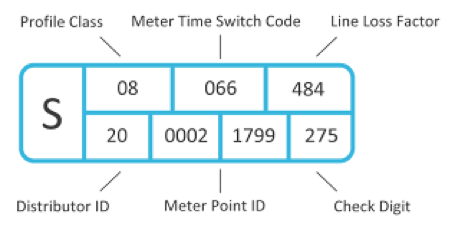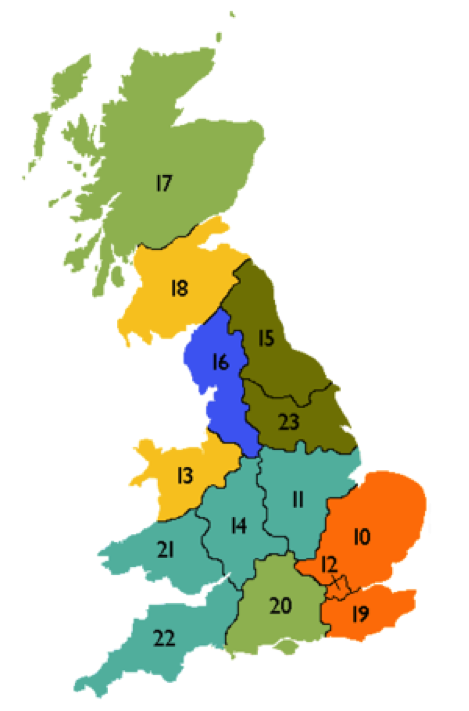GUIDE TO ENERGY
kwh – Kilowatt-Hour (KW/H)
kwh – Kilowatt-Hour (KW/H)
A kilowatt-hour is the standard unit used by suppliers to measure your consumption over a period of time. 1kWh is equal to 1,000 watts. A supplier’s unit rate may depend on the amount of kWh you use.
Electricity
Your electricity meter uses kWh to measure consumption. Your meter will, in almost all cases, show the direct kWh used but occasionally needs to have this figure multiplied by 10 to reconcile actual kWh usage.
Gas
A gas meter uses cubic meters or cubic feet as the standard unit which it then converts to kilowatt-hours. The formula for this can be found on your bill or see below a general calculation.
The formula for old imperial meters is metered units x 2.83 x 1.02264 x calorific value (varies but usually between 39-40)/3.6. For the newer metric meters, you omit the multiplication of 2.83 so it is just metered units x1.02264 x calorific value (varies but usually between 39-40)/3.6. A bill from your current supplier will show your usage in kWh.
Meter Point Administration Number (MPAN)
An MPAN is a 13-digit number to identify an electricity supply point. This number is printed on your electricity bill. If you don’t know it i.e. you just moved into a new property you can call your regional MPAS (Meter Point Administration Service) to find out. The MPAN usually starts with S and is divided into different sections as shown below:

- Profile Class: the class of pricing the meter will fall into;
- Meter Time Switch Code:when the meter bills according to the time of day and when night-time or other tariff come into effect. Night is regarded usually as between 12 o’clock midnight and 7 o’clock in the morning;
- Line Loss Factor: This is a figure used to identify the related Distribution Use of System(DUoS) charges for the MPAN. The figure reflects both the amount of distribution infrastructure used to supply the exit point and the amount of energy lost through heating of cables, transformers and so on.
- Check Digit: The final digit in the MPAN is the check digit, and validates the previous 12 (the core) using a modulus 11 test.
- Distributor ID:The area to which the meter is registered.
Distributor ID
Great Britain is divided into fourteen distribution areas. For each area a single company, the distribution network operator, has a licence to distribute electricity. They effectively carry electricity from the National Grid to the exit points (each having a unique MPAN and a possibility of several meters) where the customers are. The owner of the distribution network charges electricity suppliers for carrying the electricity in their network. Their DNO licensed regions are the same geographic areas as the former nationalised electricity boards

| DNOs | ||||
| ID | Name | Operator | Phone Number | Market Participant ID |
| 10 | Eastern England | UK Power Networks | 0800 029 4285 | EELC |
| 11 | East Midlands | Western Power Distribution | 0800 096 3080 | EMEB |
| 12 | London | UK Power Networks | 0800 029 4285 | LOND |
| 13 | Merseyside & N. Wales | SP Energy Networks | 0330 10 10 444 | MANW |
| 14 | West Midlands | Western Power Distribution | 0800 096 3080 | MIDE |
| 15 | North Eastern England | Northern Powergrid | 0800 011 3332 | NEEB |
| 16 | North Western England | Electricity North West | 0800 048 1820 | NORW |
| 17 | Northern Scotland | SSE Networks | 0800 048 3516 | HYDE |
| 18 | Southern Scotland | SP Energy Networks | 0330 10 10 444 | SPOW |
| 19 | South Eastern England | UK Power Networks | 0800 029 4285 | SEEB |
| 20 | Southern England | SSE Networks | 0800 048 3516 | SOUT |
| 21 | Southern Wales | Western Power Distribution | 0800 096 3080 | SWAE |
| 22 | South Western England | Western Power Distribution | 0800 096 3080 | SWEB |
| 23 | Yorkshire | Northern Powergrid | 0800 011 3332 | YELG |
MPAN status
MPAN status
The supply identified by the MPAN can be in one of four states: disconnected, de-energised, live, and new.
- Disconnected: The service cable has been removed and the MPAN will not be reused.
- De-energised: The service cable is in place, but the fuse has been removed. The meter remains connected to the distribution network, but no electricity can be used.
- Live: Both the service cable and the fuse are in place. The supply is fully operational.
- New: A new MPAN has been generated, however, the top line (supplementary data consisting of the Profile Class and Meter Time-Switch Code) is not yet complete. The service cable may or may not be installed.
Unmetered supplies
Unmetered supplies
It is possible for small predictable supplies to be unmetered. Examples are street lights, traffic signals, signs, bollards, telephone kiosks, CCTV and advertising displays.
For a piece of equipment to be connected to the distribution network via an unmetered connection, its consumption should not exceed 500 watts and it should operate in a predictable manner, with no provision for it to be manually turned on at the end user’s request. Generally the equipment would either be in operation and taking a supply of electricity 24 hours a day, or be controlled by a photocell, as is often the case for street lights.
Meter Point Reference Number (MPR or MPRN)
The meter point ID for gas meters. This number is printed on your gas bill but does not display on your meter. If you don’t know it i.e. you just moved into a new property, you can call the MPR enquiry line on 0870 608 1524 to find this out. Alternatively, you can contact Dr Cost who will search the national database and advise you.
Meter Serial Number
This is the number stamped on the front of the meter. This changes when a meter is exchanged. It is often printed on your bill for identification purposes but not used normally in any correspondence although you may be asked to provide it in some forms.
Calorific Value (CV)
This is a measure of heating power. It is dependent upon the composition of the gas and refers to the amount of energy released when a known volume of gas is completely combusted under specific conditions. It is measured in joules per kilogram.
The actual figure can vary slightly according to the atmosphere and distribution zone. The figure stated on the bill is an average for the billing period.
Half Hourly (HH) Meters
Half Hourly (HH) Meters
A half-hourly meter is required for any site using a reserved amount of kVA. An HH meter measures this usage in half-hourly increments throughout the day. Normally a reading device is included in a new meter or a communication device connected to the meter, which allows a data collector to connect remotely to the meter, obtaining consumption used. The supplier will then receive this information from the data collector and bill a customer accordingly.
P272 legislation requires all former Maximum Demand meters to be transitioned to HH metering. This law came into effect in April 2017 and continues to be rolled out nationally.
Half Hourly Data (HHD)
HHD is the product of the half-hour meter. This is sent to the relevant supplier via a remote SIM card or a fixed BT line. The data is usually made available to end users by way of a spreadsheet. A full year’s half-hourly data will be a spreadsheet that runs 48 columns across (for every half-hour) and 365 rows down (for every day). This information is needed by a potential new supplier when you request a quote for an HH metered site.
kVA – Availability
kVA – Availability
kVA stands for kilovolt-ampere and refers to the limit of capacity for a site. One kVA equals 1,000 watts of power. Customers pay a charge (per unit) according to the agreed capacity for that site. There is no direct link between kVA requirements and annual energy usage. For example, two buildings use 100,000 kWh annually but one uses equipment with a larger power requirement for an hour a day and the other uses less powerful equipment for a longer period. kVA charges are also known as capacity charges. These are outlined below.
Agreed Capacity
Agreed Capacity
The maximum electrical load a customer may use in the property as agreed with the local Distribution Network Operator (DNO).
Capacity Charge
Capacity Charge
A capacity charge is a set charge by the local DNO for investment and maintenance of the electricity network, based on the agreed electricity capacity needed for a property. This is also called the Availability Charge.
Exceeding the agreed capacity will lead to penalties, which are called excess capacity charges. These can cost up to three times the usual rate for consumption over your kVA and are governed by recent Ofgem legislation called DCP161.
Meter Operator (MOp)
Meter Operator (MOp)
This is the organisation appointed by the Government to maintain metering equipment for gas and electricity. HH electricity customers are required to agree an MOP contract, which usually runs for up to 5 years. If no separate MOP contract has been agreed, the supplier will implement default costs or appoint their own MOP whose costs can be 100% more than a contract directly with a meter operator. Some suppliers, such as Npower, EDF and EON, operate their own Meter Operator contracts.
Renewable Energy
Renewable Energy
Renewable energy is used to describe the energy produced using naturally replenishing resources. This includes solar power, wind, wave and tide and hydroelectricity. Wood, straw and waste are often called solid renewable energy, while landfill gas and sewerage gas can be described as gaseous renewables.
Objections
Objections
An objection can occur when the current supplier stops the supply transferring to a new supplier due to it still being in a contracted period, absence of valid termination or if there is an outstanding balance on the account. This is often an area of dispute, particularly where a supplier’s billing has been incorrect.
Letter of Authority
A LOA is a document which allows an intermediary to discuss your account with your supplier. This is a valid.
Take or Pay or Tolerance clauses
Take or Pay or Tolerance clauses
Some suppliers will implement a take or pay, otherwise known as a tolerance clause. This is based on your calculated annual energy consumption. It can be set from as low a banding as 90% – 110% of agreed usage up to 70% – 130%. This varies from supplier to supplier and is mostly only implemented for industrial and commercial-sized meters or contracts, not small or medium-sized enterprises (SMEs).
If you are planning to close down a site, reduce the capacity or extend and expand then these clauses need to be checked prior to entering a contract. Whilst few suppliers enact these, it is still prudent to check them.
Renewable Obligation
Renewable Obligation
This is the main government market mechanism to support renewable energy. It is an obligation on all electricity suppliers to supply a certain amount of their electricity sales from accredited renewable sources under the Climate Change Levy exemption scheme. As these are not predictable for a long time ahead some suppliers will list them separately on the bill and/or pass any increases on to the customer.
FIT – Feed in tariff
FIT – Feed in tariff
This is the main government market mechanism to support renewable energy by private investors. Home and business owners who install renewable energy generators such as solar panels receive a pay-back for the electricity generated, which is fed into the system or used locally. Hence the name Feed-in[delete hyphen]Tariff. Electricity consumers are obliged to contribute towards the cost of installation of renewable energy by way of sharing the total cost paid out as FiT. As the figures are not predictable before the quarterly reconciliation, some suppliers will list them separately on the bill as an estimated amount and/or reconcile when the final figures are available. The previous Feed-in Tariff guarantees ended to new applicants on March 31, 2019.
CfD FIT
The Contracts for Difference (CfD) scheme is the government’s main mechanism for supporting low-carbon electricity generation. CfDs incentivise investment in renewable energy by providing developers of projects with high upfront costs and long lifetimes with direct protection from volatile wholesale prices, and they protect consumers from paying increased support costs when electricity prices are high.
Renewable generators located in the UK that meet the eligibility requirements can apply for a CfD by submitting what is a form of ‘sealed bid’. There have been 3 auctions, or allocation rounds, to date, which have seen a range of different renewable technologies competing directly against each other for a contract.
Successful developers of renewable projects enter into a private law contract with the Low Carbon Contracts Company (LCCC), a government-owned company. Developers are paid a flat (indexed) rate for the electricity they produce over a 15-year period; the difference between the ‘strike price’ (a price for electricity reflecting the cost of investing in a particular low carbon technology) and the ‘reference price’ (a measure of the average market price for electricity in the GB market).
CM – Capacity Market
CM – Capacity Market
The Government introduced measures to ensure the UK’s future electricity supply is both reliable and able to meet our targets for a reduction in carbon emissions, whilst minimising costs for customers. The measures and associated legislation is collectively called Electricity Market Reform (EMR). EMR includes incentive schemes for low carbon generation and the provision of generating capacity to ensure that the UK continues to have a reliable supply of power.
A company is considered a micro business (for utility purposes) by Ofgem if it meets one of the following criteria:
- for gas supply agreements it consumes less than 293,071 kWh of gas a year; or
- for electricity supply agreements, it consumes less than 100,000 kWh of electricity a year; or
- or gas and/or electricity supply agreements, it has fewer than 10 employees (or the full time equivalent) and an annual turnover or annual balance sheet total of less than €2m.
A micro business has similar legal protections to a domestic contract, in particular regarding the renewal process, and has access to the energy ombudsman in case of an unresolved complaint against the supplier.
